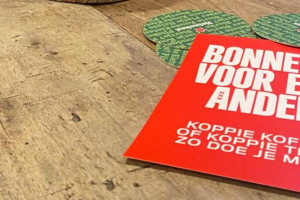Green light for designers seen as threat to red-light district
"This is a Pimp free zone," reads the sticker pasted on the window of the 17th-century townhouse overlooking the main canal cutting through the heart of Amsterdam’s red-light district, writes Jamie Smyth.
The former brothel, which until last year housed prostitutes who turned tricks for tourists at EUR 50 a time, has been transformed into a fashion studio.
The neon lights and red curtains have been ripped out, replaced by brightly lit cubicles displaying glitzy metallic-coloured skirts, handbags and outlandish high-heeled shoes that would not look out of place if worn by the former occupants.
"It’s inspiring working here. You see people from all walks of life," says Bas Kosters, one of 15 up-and-coming young Dutch designers who have been given studio space in the seedy but well-trodden tourist district.
Another young designer, Edwin Oudshoorn, says he likes working in the area because he is not the only person putting in long days that stretch into the early hours.
The transformation is part of Amsterdam city government’s plan to clean up the red-light district by shutting down brothels linked to criminality.
Over the past two years the city has used tough new laws to refuse licences to suspected criminals and has forced the sale of 16 former brothels. The city paid Charlie Geerts, better known as Fat Charlie, EUR 26 million for the buildings last year and has allocated a further EUR 15 million for an ambitious redevelopment plan for the area.
Last Saturday deputy mayor Lodewijk Asscher unveiled the first phase of the city’s strategy, entitled "red-light fashion". Leading a group of foreign and Dutch journalists on a tour of the newly renovated fashion studios, he heralded a fresh start for the world-famous neighbourhood.
"We want to change this area and we want to ensure the red lights aren’t hiding a new form of modern slavery," says Asscher, who compares the city’s plan for the red-light district to former New York mayor Rudi Giuliani’s anti-crime blitz in the mid-1990s.
Asscher dismisses critics who accuse him of going on a "moral crusade" against prostitution, which was legalised in Amsterdam in 2000 and has been tolerated for centuries in the district. "There will always be sex in Amsterdam. This is a city with a reputation for tolerance," says Asscher, who in his book, New Amsterdam, called for the eventual phasing out of the red-light district.
But Amsterdam’s legendary tolerance was in short supply on Saturday, with prostitutes barracking the deputy mayor during his walkabout. One of the fashion windows was splattered with paint just a day after its opening, highlighting local concerns that the city is overstepping its powers.
The prostitutes who work in the estimated 350 red-light windows in the district are angry that they are losing access to legal and safe brothels. At least 51 windows were closed last year, forcing 102 women out of work, according to the brothel owners.
"Most women don’t want to work for a boss; they want to be independent. The closure of windows means these women have to go on the internet or work in houses, which is less visible and more dangerous," says Mariska Majoor, a former prostitute who runs an information centre in the area. She admits trafficking is a problem but says the city’s claim that 80 per cent of women are forced into prostitution is exaggerated. The real figure may be 20 per cent, says Majoor, who will speak at NUI Galway later this week in a debate on legalising prostitution.
Jan Broers (70), who owns a brothel and the Royal Taste hotel, alleges that the city’s clean-up campaign is shielding an attempt to gain control of the land in the city-centre district.
"I feel they want to move big investors into the neighbourhood. At the moment the owners of the buildings also own the land but when people are forced to sell the city can get control and lease buildings to new people for rent," he says.
Local businesses are worried that the district could become less of a draw for tourists. "My fear is that there will be less people coming here if more windows close and big attractions like the Casa Rosa [ a live sex theatre in the area] are shut," says Stephen, manager of de Stoof pub.
Wim Boef, organiser of Platform 1012 – a group of businesses opposing the city authorities – says the new law used by the authorities to close brothels is anti-democratic.
"They don’t have evidence against these businesses but they target them anyway," he says while showing journalists around the Casa Rosa, which is threatened with closure.
Boef also questions the city’s decision to use public funds to buy buildings and then offer spaces to designers rent-free. "Is this a good use of Amsterdam people’s tax money?" he asks.
Asscher certainly thinks so. "Red-light fashion" is just the start of a transformation that will keep tourists flocking to Amsterdam, he insists, as he scrutinises a fashion window sandwiched between a peep show and a brothel.
Whether the designers will eventually take over from the prostitutes and the pimps is uncertain. But for the time being the two groups will have to co-exist, fighting for space along the canals and narrow alleyways of the red-light district.



